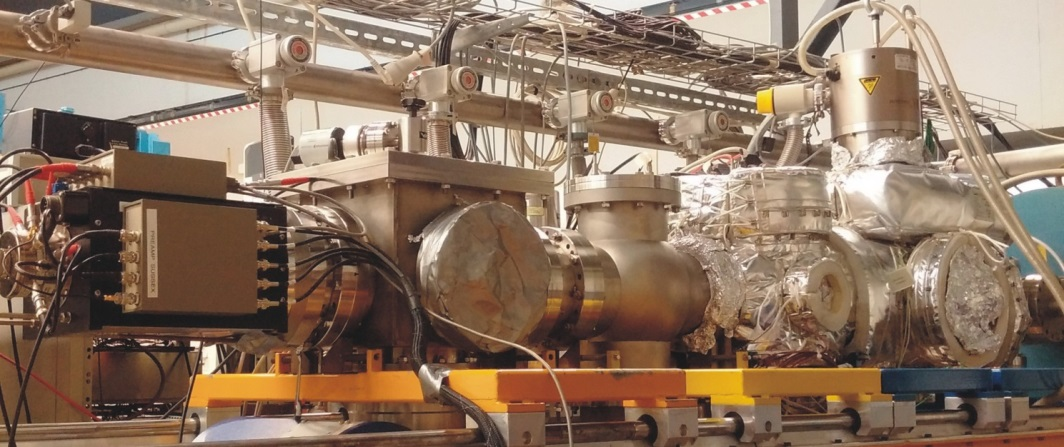Nuclear Clock

Today’s most precise time and frequency measurements are performed with optical atomic clocks. However, it has been proposed that they could potentially be outperformed by a nuclear clock, which employs a nuclear transition instead of an atomic shell transition. There is only one known nuclear state that could serve as a nuclear clock using currently available technology, namely, the isomeric first excited state of 229Th. Since 40 years nuclear physicists have targeted the identification and characterization of the elusive isomeric ground state transition of 229mTh. Evidence for its existence until recently could only be inferred from indirect measurements, suggesting an excitation energy of 7.8(5) eV. Thus the first excited state in 229Th represents the lowest nuclear excitation so far reported in the whole landscape of known isotopes. Recently, the first direct detection of this nuclear state could be realized by our group at a setup located at the Maier-Leibnitz-Laboratory in Garching (see above photograph) via its internal conversion decay branch, which confirms the isomer's existence and lays the foundation for precise studies of its decay parameters, in particular its half-life and excitation energy. Subsequently, we succeeded in performing a measurement of the halflife of the neutral isomer, confirming the expected reduction of 9 orders of magnitude compared to the one of charged 229mTh. Most recently, collinear laser spectroscopy was applied (in a collaborative effort led by our colleagues from the PTB in Braunschweig) to resolve the hyperfine structure of the thorium isomer, providing information on nuclear moments and the charge radius. Thus a considerable increase of insight into the properties of this elusive nuclear state could be achieved in the last two years, paving the way towards an all-optical control and thus the development of an ultra-precise nuclear frequency standard. Moreover, a nuclear clock promises intriguing applications in applied as well as fundamental physics, ranging from geodesy and seismology to the investigation of possible time variations of fundamental constants.
We are continuing our experimental efforts, targeting a precise detrmination of the isomer’s excitation energy and lifetime and preparing the experimental infrastructure of subsequent laser manipulation towards the goal of realizing a nuclear clock.
Contact:
Prof. Dr. P. Thirolf
References:
L. v.d. Wense, P.G. Thirolf, D. Kalb, M. Laatiaoui, JINST 8, P03005 (2013).
L. v.d. Wense, B. Seiferle, M. Laatiaoui, P.G. Thirolf, Eur. Phys. Jour. A 51, 29 (2015)
B. Seiferle, L. v.d. Wense, M. Laatiaoui, P.G. Thirolf, Eur. Phys. Jour. D 70, 58 (2016)
L. v.d. Wense et al., Nature 533, 47-51 (2016).
B. Seiferle, L. v.d. Wense, P.G. Thirolf, Phys. Rev. Lett. 118, 042501 (2017).
B. Seiferle, L. v.d. Wense, P.G. Thirolf, Eur. Phys. Jour. A 53, 108, (2017).
L. v.d. Wense et al., Phys. Rev. Lett. 119, 132503 (2017).
J. Thielking et al., Nature 556, 321-325 (2018).
Currently funded projects:

